New Nigel Treherne C.D.: Announcement and Review
Howarth of London are excited to announce the release of a new C.D. featuring the compositions of Nigel Treherne. Performed by the Orchestra of St. John’s and conducted by Gwendolyn Phear, Treherne’s new C.D. includes his Concerto for two Oboes– featuring two of Howarth artists, Christopher O’Neal and Olivia Fraser- in addition to Three Pieces for Flute Solo performed by Evelin Balog, and Concerto for two Bassoons, featuring Meyrick Alexander and Graham Hobbs.
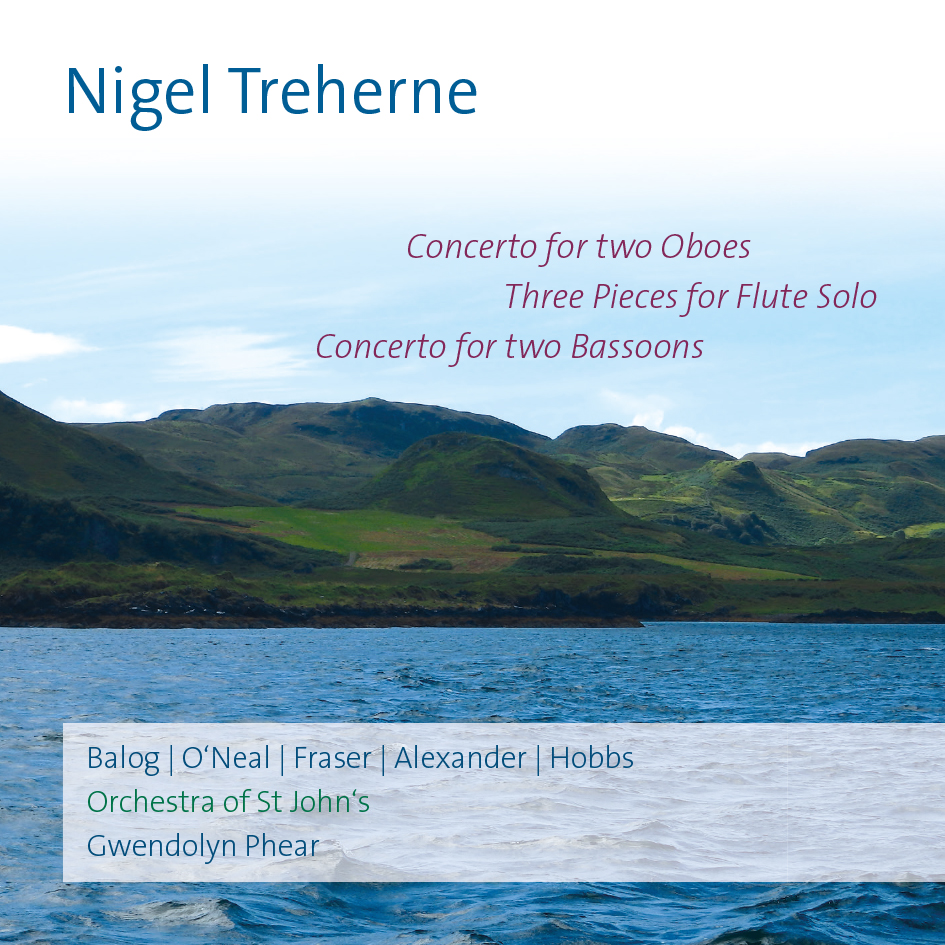
Nigel Treherne studied composition, in addition to the oboe and cello, at the Royal College of Music, London, then continued his studies at the Hochschule fur Musik Freiberg under Heinz Holliger. Treherne has held positions as principal oboist in various countries, including Great Britain, Holland, Spain, and Germany, and now predominantly works as a teacher and composer.
Treherne has explained that he composed the three works on this C.D. during ‘a time when [he] was finding [his] way back to “classical” music’, following a period of experimenting with musical ‘extremes’. Describing his compositional style on this C.D., Treherne has said ‘I feel that I… have found my own personal style, in which I allow myself the luxury of combining tonality, atonality, minimalism and jazz in any way that I feel is right’.
Treherne’s eclectic approach to composition is immediately demonstrated in his Concerto for two Oboes (2010), which features Howarth artist Christopher O’Neal playing first oboe. The founding member of award-winning ensembles Capricorn and the Elysian Wind Quintet, O’Neal studied with Terence MacDonagh at the Royal College of Music, London, and with Heinz Holliger in Germany. He is currently principal oboist with the Orchestra of St. Johns, and co-principal with the London Mozart Players, in addition to working as a professor at Trinity Laban Conservatoire, London.
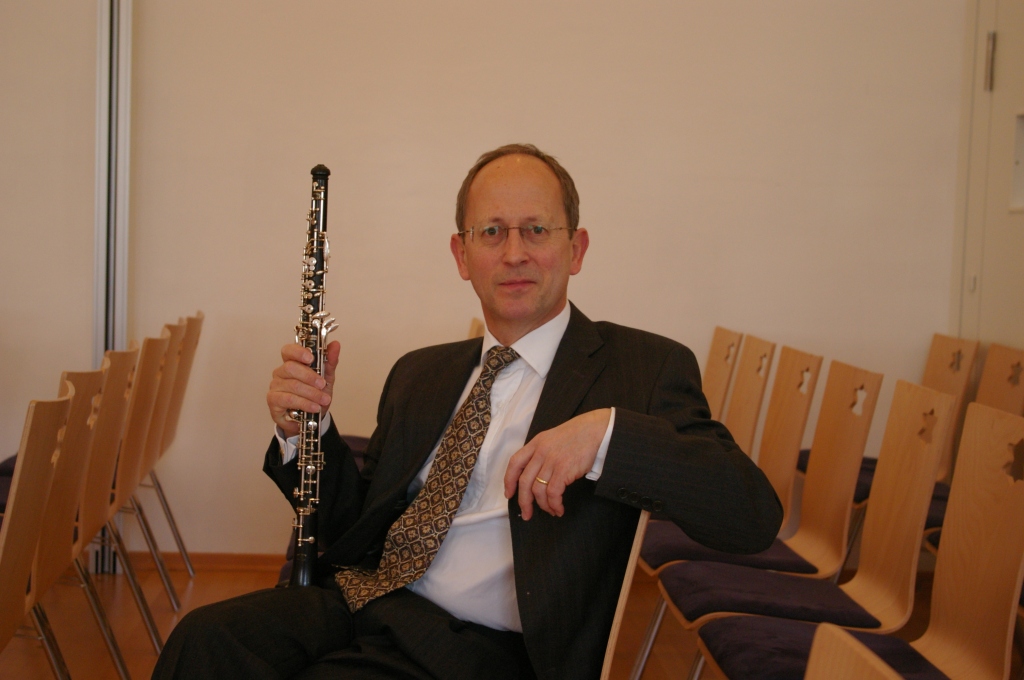
Playing alongside O’Neil as second oboist is Olivia Fraser, a versatile freelance performer who has had varied orchestral experiences, including in ballets, opera, and chamber music ensembles. Fraser studied at Trinity Laban Conservatoire, where she won several awards and trained with the Bournemouth Symphony Orchestra as part of Trinity Laban’s orchestral partnership scheme. Since graduating, Fraser has performed with some of the U.K.’s top orchestras, including the English National Opera and the Royal Ballet Sinfonia.
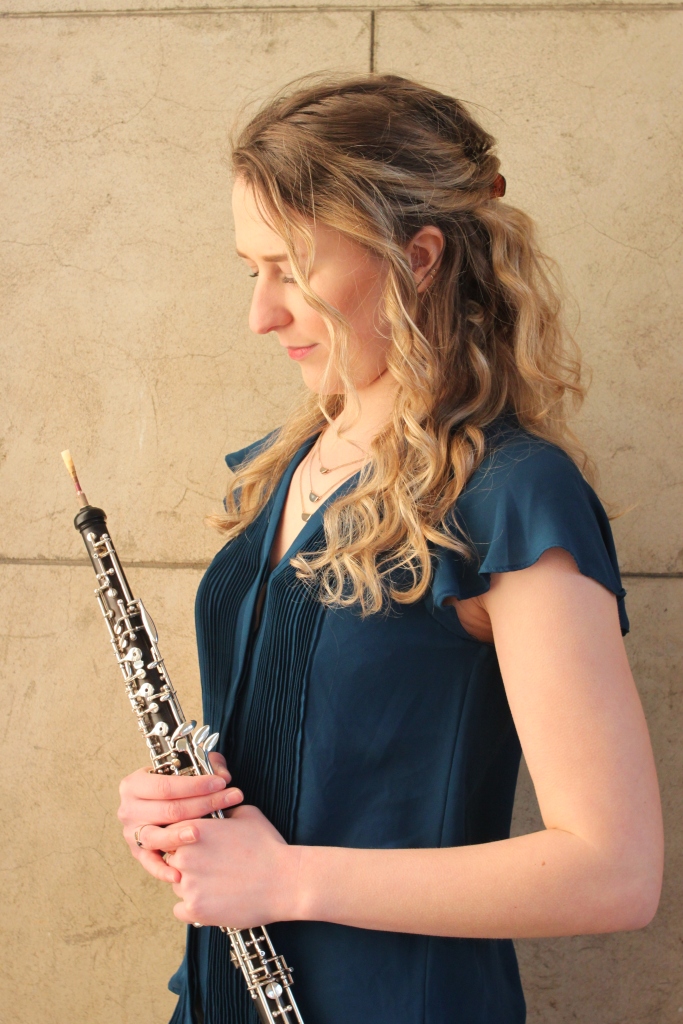
Treherne’s Concerto for two Oboes is written using the Concerto Grosso form. This structure, popular in 17th-century Italy, is characterised by its A-B-C-B-A format. The concerto begins with a short Ritornello section, where the theme is introduced by the two oboists. In this section, lyrical melodies are contrasted with rapid virtuosic passages which are perfectly executed by the oboists. As the piece develops, there is a sense of the music getting more drawn out, the steady push and pull motion in the strings evoking a sense of expansion.
A change of mood in the piece occurs when a lively cadenza is played by the first oboist whilst the second oboe provides rhythmic reinforcement, and the strings maintain a steady pulsing rhythm. A fluttery new theme then follows (in the B section), which Trehene developed from an unidentified bird call ‘that was very persistent when [he] was working on the oboe concerto in Italy’.
The concerto’s Adagio section is dominated by the two oboe parts intricately weaving in and out of each other. Much of the melodic material in this segment is formed of ascending fourths and fifths, and the Ritornello theme is heard again. Towards its end, the piece accelerates and becomes more involved, both oboists playing busy virtuosic lines. The build-up to the concerto’s conclusion is very rhythmically dominated, and the piece culminates in a tutti trill.
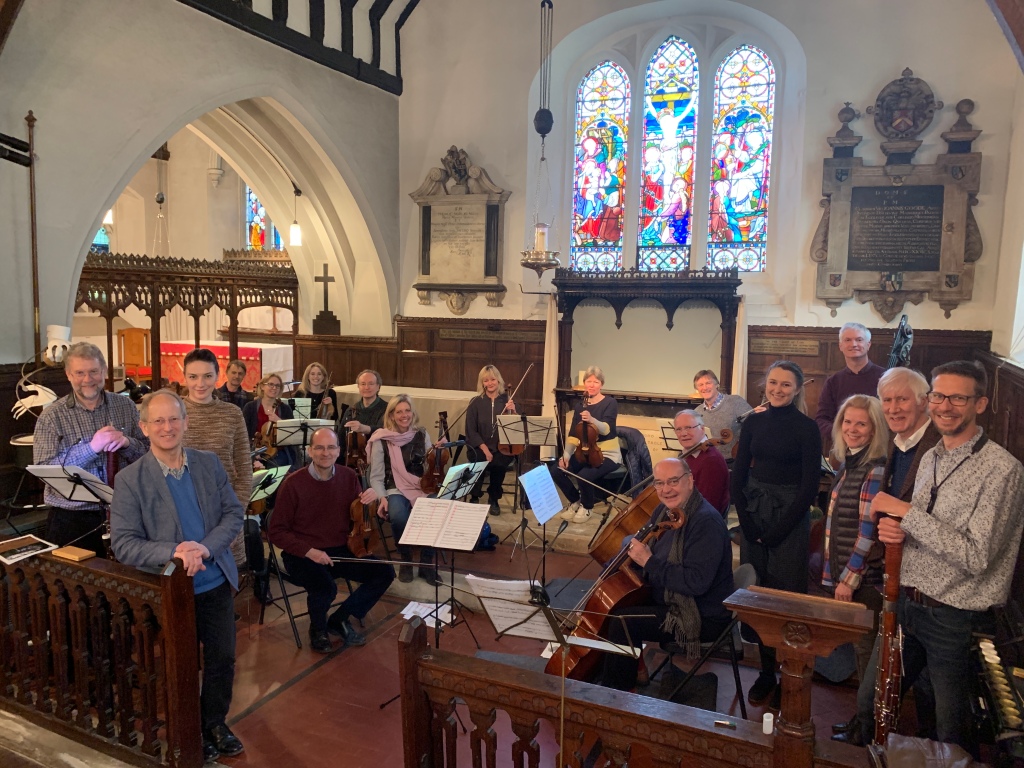
The next of Treherne’s compositions on his new C.D. is his Three Pieces for Flute Solo (2005), which features Evelin Balog as solo flautist. The first piece, Amaryllis, is a fantasy based on the 16th century Italian love song Amarilli mia bella, composed by Giulio Caccini. Very fluid and lyrical in style, this dancelike piece featuring beautiful virtuosic playing by Balog, demonstrating the full range of the flute.
Treherne composed his second flute piece, Aria, using short discarded phrases from his compositional notebooks. The resulting piece is fragmentary in nature with an improvisatory feel, where silence is frequently utilised for its own effect. Treherne intended his third flute composition as a tribute to Benjamin Britten. Sea Interlude is a miniature tone poem featuring cadenza-like flute writing.
The final composition on Treherne’s latest C.D. is his Concerto for two Bassoons (2007), in which the bassoon parts are played by Meyrick Alexander and Graham Hobbs. Using a similar compositional approach to that employed in his Concerto for two Oboes, Treherne’s bassoon concerto is written in the Concerto Grosso style. Its opening Adagio consists of the strings gradually building in texture, increasing anticipation for the bassoons’ entries. Throughout the concerto’s first movement, the bassoon lines alternate between complementing and clashing with each other, and are largely made up of triplet-based themes passed between the two instruments.
Movement Two of the bassoon concerto opens with a cello solo, from which the bassoons gently emerge, playing lyrical lines which are passed between them. This movement generally has a melancholic feel, frequently featuring descending phrases. This is starkly contrasted by the piece’s final movement, a rhythmically lively Allegro, which has with a perpetual sense of pushing forwards.
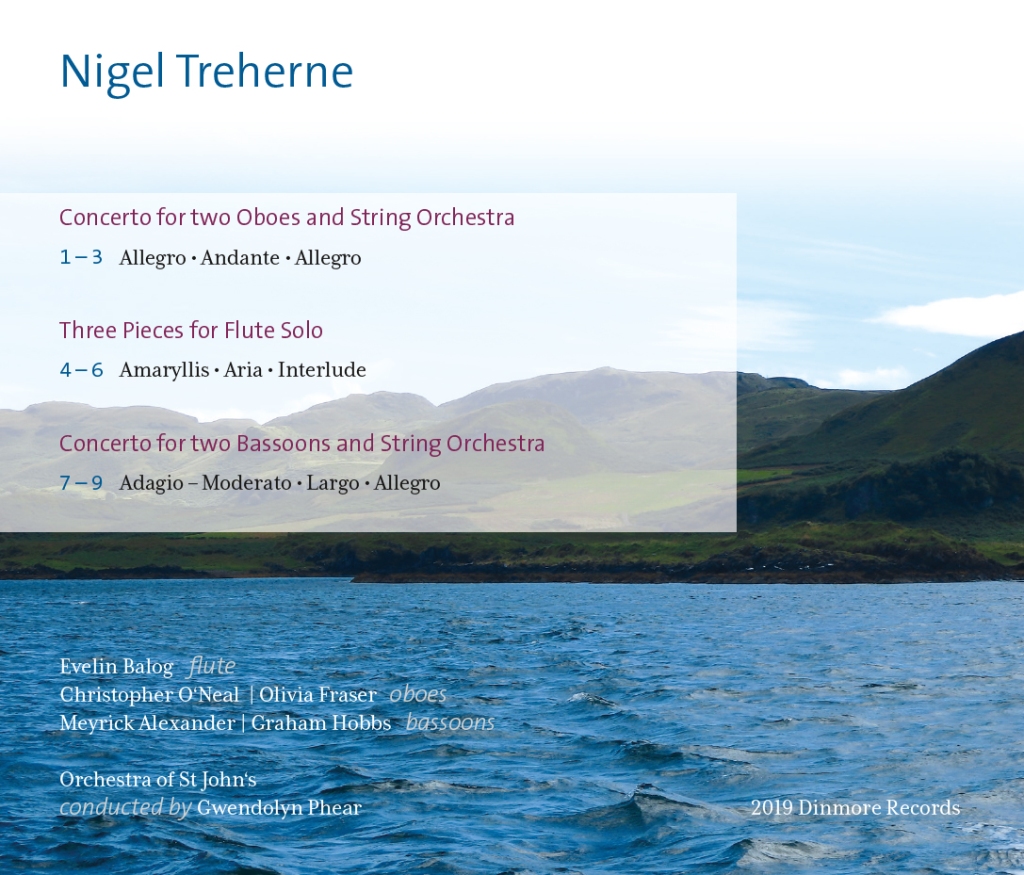
Nigel Treherne’s new C.D. is now available for purchase here
or more information, please contact us at sales@howarth.uk.com .